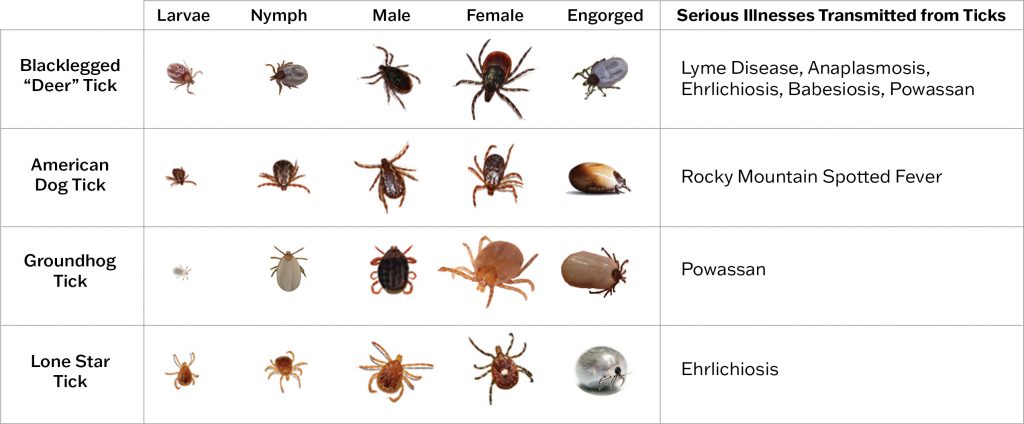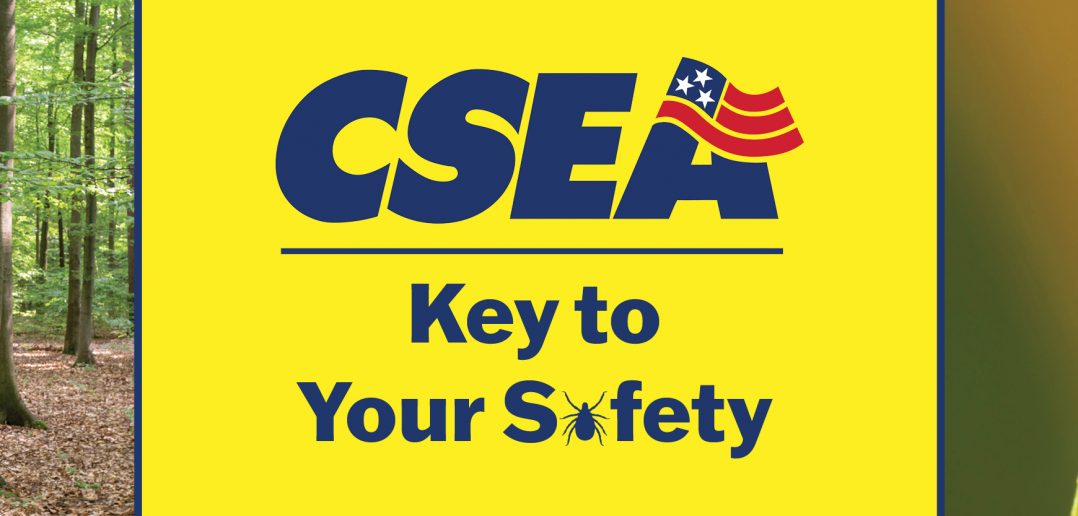The tick population in New York State is exploding.
Each year, the volume and severity of tick-borne illnesses seem to increase, and many safety and health experts are expecting that there will be an especially high number of tick bites this year due to the mild winter.
Often, these bites result in minor nuisance symptoms, but they can also result in a fatal illness. There are approximately 30 species of ticks in New York. Of those, about 10 commonly bite people and only four species can cause a serious illness that can result in death.
The three most common ticks in New York (Deer aka Black-legged Tick, the Dog Tick, and the Lone Star Tick) can carry bacteria or viruses that can cause a fatal illness. The less common Woodchuck (Groundhog Tick) can also cause a life-threatening illness.
According to the Centers for Disease Control and Prevention (CDC), in 2019 (the most recent year full statistics are available), New York had 4,243 confirmed and probable cases of Lyme disease, the most common tick-borne illness and the second highest total among states. Tick bites and resulting illness are particularly prevalent in CSEA’s Long Island, Metropolitan and Southern regions.
Here is a look at some ways to stay safe.
Disease Spreading Tick Identification Chart

Avoid Being Bitten
Employers should be spreading awareness, providing training, ensuring proper attire and providing effective repellants. Tick bites are OSHA and PESH-recordable incidents and must be recorded in the annual report of occupational injuries and illnesses. Here are some things to know to ensure your employer properly protects you.
- Know where to expect ticks, which live in grassy, brushy, or wooded areas, or on animals.
- Use U.S. Environmental Protection Agency-registered insect repellents containing DEET, picaridin, IR3535, oil of lemon eucalyptus, para-menthane-diol, or 2-undecanone.
- Treat clothing and gear, such as boots, pants, and socks products containing 0.5% permethrin.
- Check for ticks after outdoor activity, especially under the arms, in and around the ears, inside the belly button, behind the knees, between the legs, around the waist, and on the hairline and scalp.
- Keep ticks away from exposed skin by wearing long-sleeved shirts, long pants, with tight cuffs at the wrists and ankles.
- Tuck pants into socks or use double sided tape.
- Wear light-colored clothing to be able to see ticks more easily.
Bite Back!
- Early and proper removal of ticks is known to reduce the probability of illness. For example, a Deer Tick requires almost 36 hours attachment for the bacteria that causes Lyme disease to take hold.
- Never squeeze or twist an attached tick. It can increase the transmission of harmful bacteria and viruses.
 Remove the tick with your CSEA Tick Key remover or use clean, fine-tipped tweezers to grasp the tick as close to its head and the skin’s surface as possible, then pull upward with steady, even pressure.
Remove the tick with your CSEA Tick Key remover or use clean, fine-tipped tweezers to grasp the tick as close to its head and the skin’s surface as possible, then pull upward with steady, even pressure.- Immediately clean and sanitize the skin and surrounding area of the bite.
- If possible, place the tick in an airtight container with a little rubbing alcohol to kill it and save the tick, if requested by a medical provider.
- If at work, document and report the bite immediately or within 30 days.
- Monitor the bite area for rash or infection.
- Monitor yourself for onset of fever and flu-like symptoms.
- Contact your medical provider immediately if symptoms progress.
- Contact a Workers’ Compensation attorney if you contract a tick-borne illness and require medical attention, if bitten at work.
Enforcement
The standards for protecting public workers against tick bites and Lyme disease are covered under the state Public Employee Safety and Health Act’s general duty clause (Section 27-a(3), which states that “Every employer shall: (1) furnish to each of its employees, employment and a place of employment which are free from recognized hazards that are causing or are likely to cause death or serious physical harm to its employees and which will provide reasonable and adequate protection to the lives, safety and health of its employees.”
Private sector workers are similarly covered under the U.S. Occupational Safety and Health Act’s general duty clause.
Visit cseany.org/ticks for more information.




